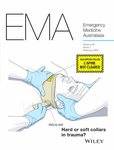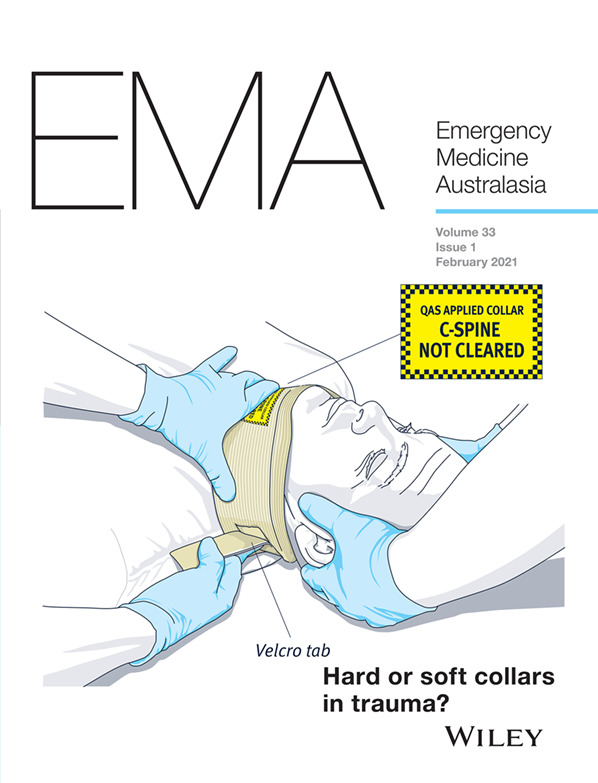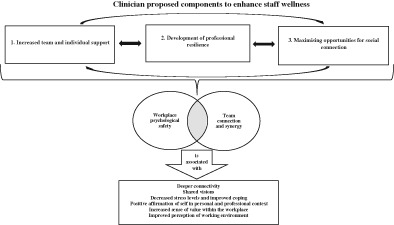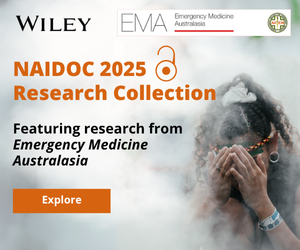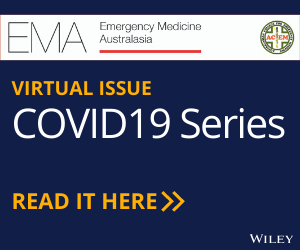Journal list menu
Export Citations
Download PDFs
Cover image
Issue information
In this February issue
Editorial
Is it finally time we stick our neck out?
- Pages: 4-5
- First Published: 25 January 2021
Review Articles
Review article: Up (to) date for Australian Toxicology and Toxinology guidelines
- Pages: 6-8
- First Published: 29 October 2020
The optimal management of toxicology/toxinology patients is constantly evolving as new evidence emerges. The updated eTG complete, Toxicology and Toxinology guideline offers a consensus of contemporary evidence and expert views from across Australia. It is a valuable evidence-based resource for the management of poisoned patients.
Review article: Implicit bias towards Aboriginal and Torres Strait Islander patients within Australian emergency departments
- Pages: 9-18
- First Published: 28 November 2020

Implicit racial bias may result in stereotyping of racial minorities and premature diagnostic closure. Furthermore, it may contribute to distrust of medical professionals resulting in higher rates of leave events and hinder racial minorities from seeking care or following treatment recommendations. The aim of this review is to analyse the effect of implicit bias on patient outcomes in the ED in international literature and explore how these studies correlate to an Australian context.
Original Research
Neurologic outcomes following the introduction of a policy for using soft cervical collars in suspected traumatic cervical spine injury: A retrospective chart review
- Pages: 19-24
- First Published: 09 October 2020
In trauma patients with potential cervical spine injury, immobilisation with a rigid cervical collar is widely recommended to prevent a secondary spinal cord injury, despite a lack of evidence for this practice, but increasing evidence for complications. Soft foam collars may mitigate some of these issues and do not appear to increase the risk for secondary spinal cord injury. Larger prospective studies are required before a robust conclusion on safety can be claimed.
Core components of a staff wellness strategy in emergency departments: A clinician-informed nominal group study
- Pages: 25-33
- First Published: 26 June 2020
Aeromedical retrievals in Queensland: A five-year review
- Pages: 34-44
- First Published: 06 July 2020
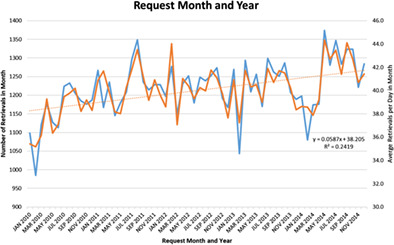
A retrospective case series of aeromedical retrievals undertaken between 2010 and 2014 in the state of Queensland was undertaken. Key insights include the large proportion of retrievals for older adults, cardiology and injury-related taskings. Aeromedical services play a vital role in enabling all sick and injured residents' have access to the level of care required irrespective of their location, or remoteness, of residence.
Enquiries to the New Zealand National Poisons Centre in 2018
- Pages: 45-51
- First Published: 19 June 2020
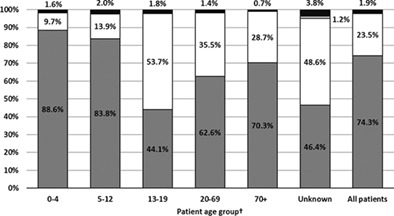
The New Zealand National Poisons Centre provides 24/7 freely accessible expert clinical assessment and management advice for poisonings through telephone consultations and its extensive online poisoning information database. Most calls in 2018 were from the general public and involved paediatric exposures which could be managed at home. Most telephone consultations with New Zealand National Poisons Centre clinical toxicologists and queries of the online database involved exposures to medications, particularly paracetamol.
Association between potential primary care emergency service and general practitioner care utilisation in New South Wales
- Pages: 52-57
- First Published: 28 June 2020
Epidemiology, treatment and outcome of patients with lower respiratory tract infection presenting to emergency departments with dyspnoea (AANZDEM and EuroDEM studies)
- Pages: 58-66
- First Published: 03 August 2020
Impact of a new specialist alcohol and drug brief intervention service model integrated into the emergency department: An interrupted time series analysis
- Pages: 67-73
- First Published: 31 July 2020
Evaluating an emergency department-based mental health liaison nurse service: A multi-site translational research project
- Pages: 74-81
- First Published: 18 July 2020
Is lactate lower in septic patients who are prescribed beta blockers? Retrospective cohort study of an intensive care population
- Pages: 82-87
- First Published: 18 August 2020
Does location of rapid influenza diagnostic testing influence treatment time and ancillary testing in a paediatric emergency department?
- Pages: 88-93
- First Published: 17 August 2020
Association of blood pressure changes with survival after paramedic rapid sequence intubation in out-of-hospital patients with stroke
- Pages: 94-99
- First Published: 09 August 2020
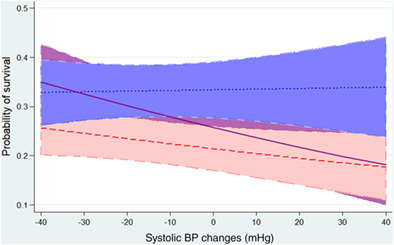
RSI is used to secure the airway of some patients with stroke. Recent observational studies suggest that RSI is associated with poorer survival, and that decreases in systolic BP following RSI could be a cause of worse survival. The present study was a retrospective analysis of all stroke patients that received paramedic RSI attended by Ambulance Victoria, Australia. Paramedic RSI-related decrease in systolic BP is associated with improved survival in those with intra-cerebral or subarachnoid haemorrhage but not ischaemic stroke.
Incidence, bystander emergency response management and outcomes of out-of-hospital cardiac arrest at exercise and sport facilities in Australia
- Pages: 100-106
- First Published: 31 August 2020
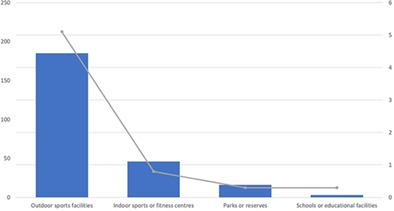
The aim of the present study was to investigate the incidence of out-of-hospital cardiac arrest (OHCA) at exercise and sport facilities in Australia and the impact of effective bystander-initiated CPR and automated external defibrillator use on return of spontaneous circulation to hospital admission. There were 250 OHCA events at exercise and sport facilities, with an incidence rate of 5.1 per 100 000 participants per year at outdoor sports facilities. The findings show that effective bystander-initiated CPR and automated external defibrillator use can help OHCA patients achieve return of spontaneous circulation to hospital admission.
Systematic review and meta-analysis of oral paracetamol versus combination oral analgesics for acute musculoskeletal injuries
- Pages: 107-113
- First Published: 31 August 2020
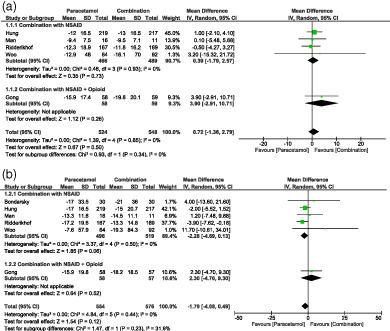
The aim of this systematic review and meta-analysis was to determine if a combination of analgesics conveys any significant clinical benefit over paracetamol alone in managing acute musculoskeletal injuries. Six studies were identified (n = 1254) and overall there was no clinically important difference between groups for reduction in pain score in the first 2 h, 24 h or 72 h. In conclusion, paracetamol monotherapy is a reasonable first-line analgesic for acute musculoskeletal injuries as combining additional oral agents does not result in any significant additional analgesic effect.
Epidemiology and clinical features of emergency department patients with suspected and confirmed COVID-19: A multisite report from the COVID-19 Emergency Department Quality Improvement Project for July 2020 (COVED-3)
- Pages: 114-124
- First Published: 21 September 2020
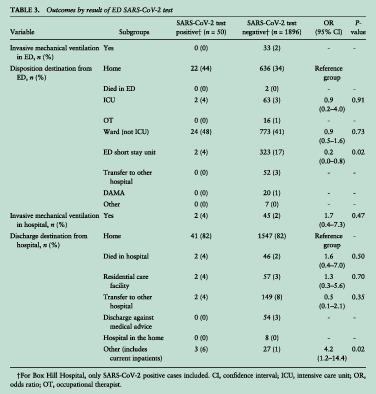
A substantial proportion of patients presenting to Australian EDs in July 2020 underwent SARS-CoV-2 testing and required enhanced infection prevention and control precautions. Only a small proportion returned a positive result. The presence of SARS-CoV-2 on nasopharyngeal testing was not associated with mechanical ventilation or death in hospital.
Paediatric Emergency Medicine
Mental health presentations to a paediatric emergency department
- Pages: 125-130
- First Published: 12 November 2020
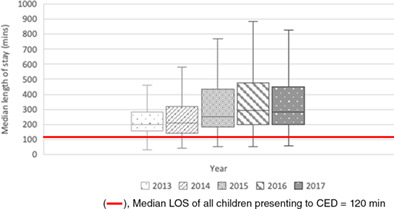
The present study explored trends in presentation and key performance indicators with respect to children seeking mental health services at The Prince Charles Hospital Children's Emergency Department, Brisbane. Mental health presentations almost doubled over the 5 years (185 attendances in 2013; 342 in 2017), however, as a proportion of overall presentations, there was no significant increase. The percentage of mental health presentations meeting National Emergency Access Target criteria dropped from 63% in 2013 to 39% in 2017 (P < 0.0001). Those requiring a mental health inpatient stay were more likely to have very extended length of stay within the Children's Emergency Department.
Acute Geriatrics
It's time: Delivering optimal emergency care of residents of aged care facilities in the era of COVID-19
- Pages: 131-137
- First Published: 01 November 2020
Clinical Procedures
Resuscitative thoracotomy
- Pages: 138-141
- First Published: 17 November 2020
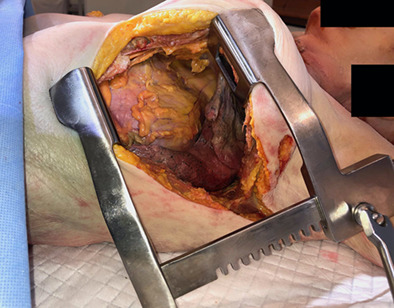
A trauma patient with cardiac tamponade may not survive transfer to the operating theatre for pericardial decompression. This article describes an approach to a resuscitative thoracotomy in the ED, which may be life-saving in these patients when a cardiothoracic surgeon is not immediately available.
Trainee Focus
Private parts: Emergency medicine in the private sector
- Pages: 142-144
- First Published: 28 December 2020
Private hospital emergency department: An ACEM trainee experience
- Pages: 147-148
- First Published: 25 January 2021
Short Reports
Impact of COVID-19 ‘circuit-breaker’ measures on emergency medical services utilisation and out-of-hospital cardiac arrest outcomes in Singapore
- Pages: 149-151
- First Published: 19 October 2020
Impact of COVID-19 social restrictions on trauma presentations in South Australia
- Pages: 152-154
- First Published: 30 October 2020
Ketamine: Is the current 200 mg product fit for purpose in the emergency department?
- Pages: 155-156
- First Published: 10 December 2020
Factors predictive for computed tomography use and abnormality in paediatric head injuries in Australia and New Zealand
- Pages: 157-160
- First Published: 22 December 2020
Perspectives
The International Federation for Emergency Medicine report on emergency department crowding and access block: A brief summary
- Pages: 161-163
- First Published: 13 January 2021
Electronic medical record platform enhancements during COVID-19 to support identify-isolate-inform strategy for initial detection and management of patients
- Pages: 164-167
- First Published: 02 November 2020
Consent and refusal of treatment by older children in emergency settings
- Pages: 168-171
- First Published: 09 November 2020
When patients behave badly: Consent, breach of the duty of care and the law
- Pages: 172-174
- First Published: 02 December 2020
Overcrowding kills: How COVID-19 could reshape emergency department patient flow in the new normal
- Pages: 175-177
- First Published: 08 December 2020
Letters to the Editor
Barriers to accessing good ophthalmic care in the emergency department
- Page: 178
- First Published: 08 November 2020
Falling methamphetamine-related presentations to a clinical toxicology unit during the COVID-19 pandemic
- Pages: 179-180
- First Published: 06 November 2020
Cellulitis: Treatment failure or failure to define treatment failure?
- Pages: 180-181
- First Published: 16 November 2020
What emergency department wait times do community members want to see displayed?
- Pages: 181-183
- First Published: 07 December 2020




